At 30 Berkley Square, the Grosvenor Gallery London, known for its vignettes and visions of South Asian Art, unveiled Crossing Borders , a celebration of art that speaks to the soul in a tapestry of Indian and other voices that celebrate human observation, and significant immersive experiences.
Phillips X, in collaboration with Grosvenor Gallery, Europe’s leading gallery for South Asian art, threw open Crossing Borders: Modern Art from South Asia last week. Coinciding with an unprecedented institutional focus this year, Crossing Borders presents artists who shaped Modernism across India, Pakistan, Bangladesh, Sri Lanka, and Nepal. This landmark selling exhibition is on view at Phillips Berkeley Square, London.
Crossing Borders explores the development of new visual languages – rejecting colonial paradigms and embracing contemporary materials, ideologies, and forms. Highlighted artists include F.N. Souza, S.H. Raza, M.F. Husain, Bhupen Khakhar, Ram Kumar, Rasheed Araeen, A.R. Chughtai, Syed Sadequain, Jamil Naqsh, George Keyt, Lain Singh Bangdel, and other Indian contemporary masters.
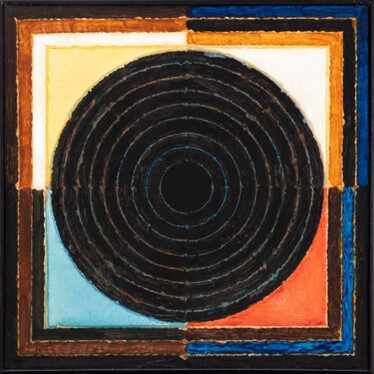
SH Raza Bindu-Temps-Espace 1988
Two works in this epic unveiling exhibit Raza’s love for geometry and symbolism. The downward triangles, symbolic of the feminine energy of Shakti, and the suggestion of the creative seed from which all life emerges, and the central focus of Raza’s later works.
During the late 1970s, Sayed Haider Raza became fascinated by the ancient art, philosophy and Tantric traditions of his homeland. This included mandalas and yantras: cosmic diagrams that visualise ancient Indian notions of time and space. By the mid 1980s, Raza’s paintings had become tightly ordered geometric compositions, closely inspired by these ancient patterns.
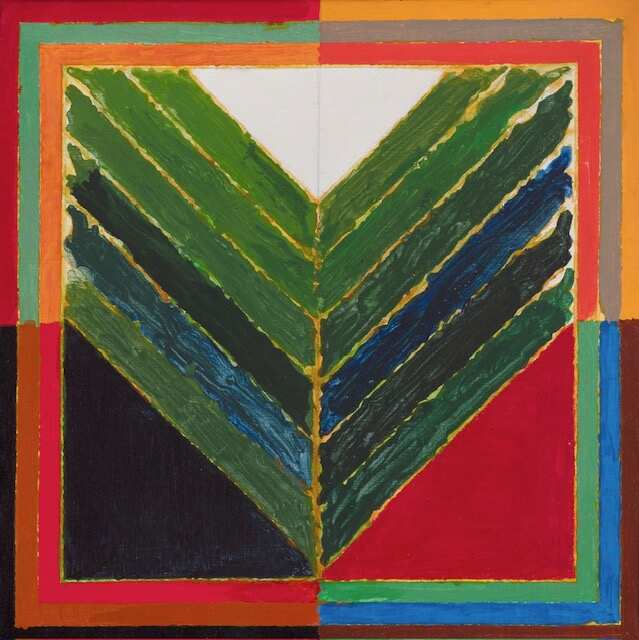
Raza’s Germination
Sayed Haider Raza’s alliance with elements of nature which govern time and space and infuse order into the universe was a deeper urge to resort to the principles which governed pictorial language ,to infuse order into the canvas. Raza’s vocabulary of the point, the line ,the diagonal of the square, and the triangle became the essential components of his work.
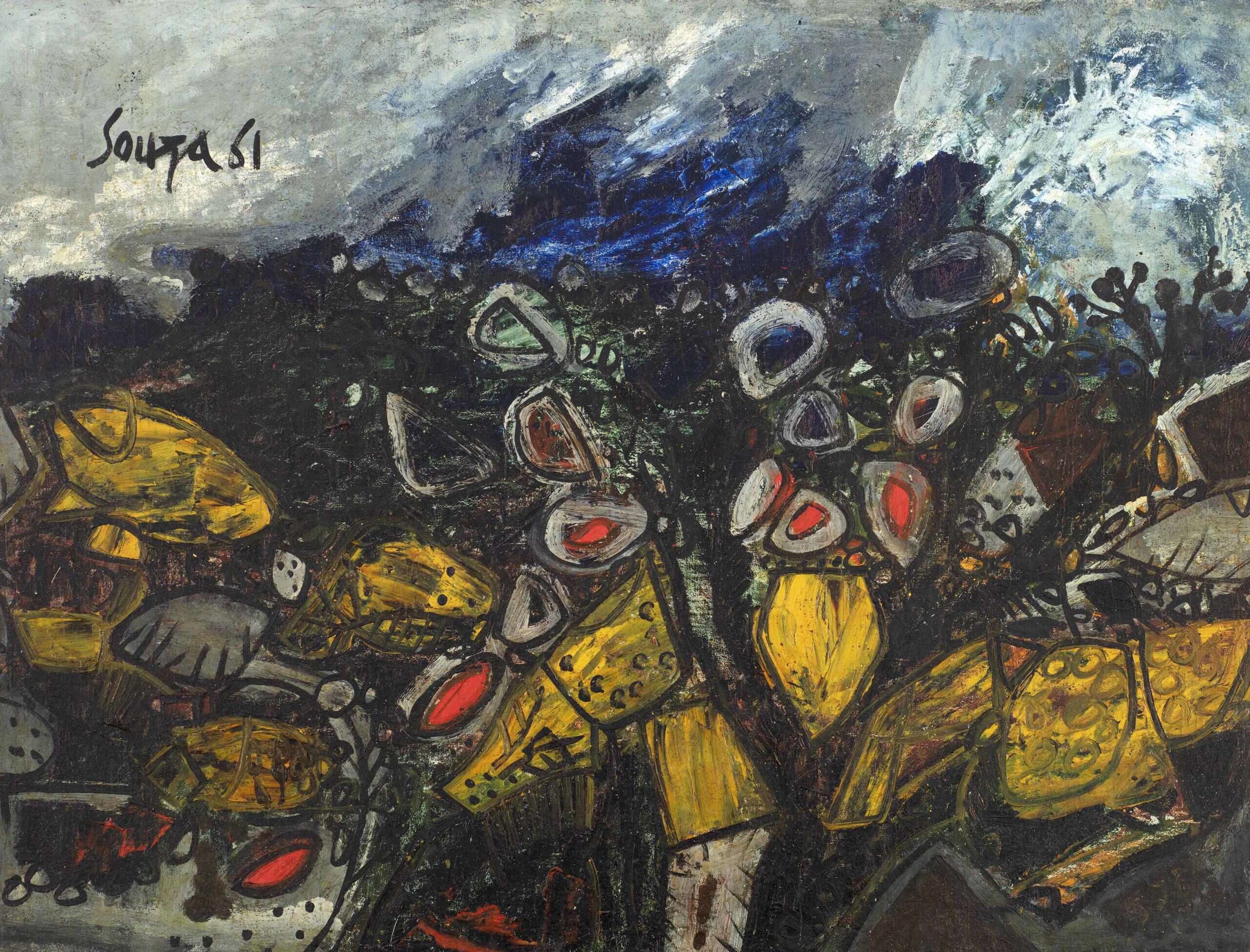
FN Souza’s Flowers 1951
From 1951, this riveting study of Flowers by Souza, is a portrait of what is dynamic as well as gestural. Here, through the genre of a landscape Souza articulates a series of images that appear to crumple and dissolve within the space of the painting as if itself alive and an extension of the tentacle-like stems protruding . The draughtsman’s black line is present , within a flow that is more fluid and expressive, fighting to contain the composition and its colours. Gesture and movement bring the flowers and leaves and sky to life, as if they are bursting to break free of the canvas. Souza’s palette compliments this vitality , and can be compared to stained glass windows.
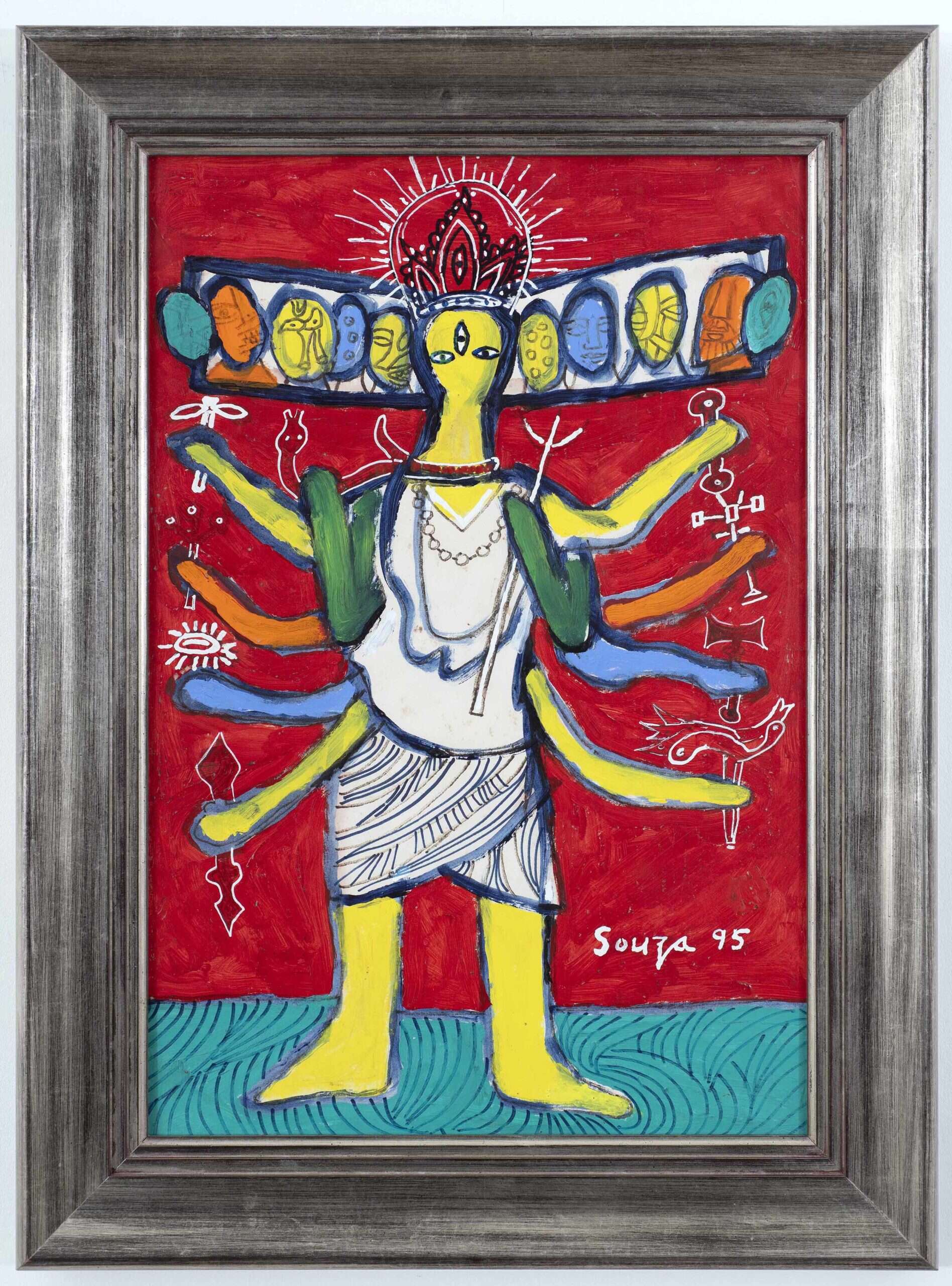
Souza’s Ravanna
Acrylic, graphite and marker pen on paper Souza’s Ravanna is a delight to behold, created in a pop art style with fluid lines popping with colour and playful intent.Bold and brusque is this work that has emotive evocations.
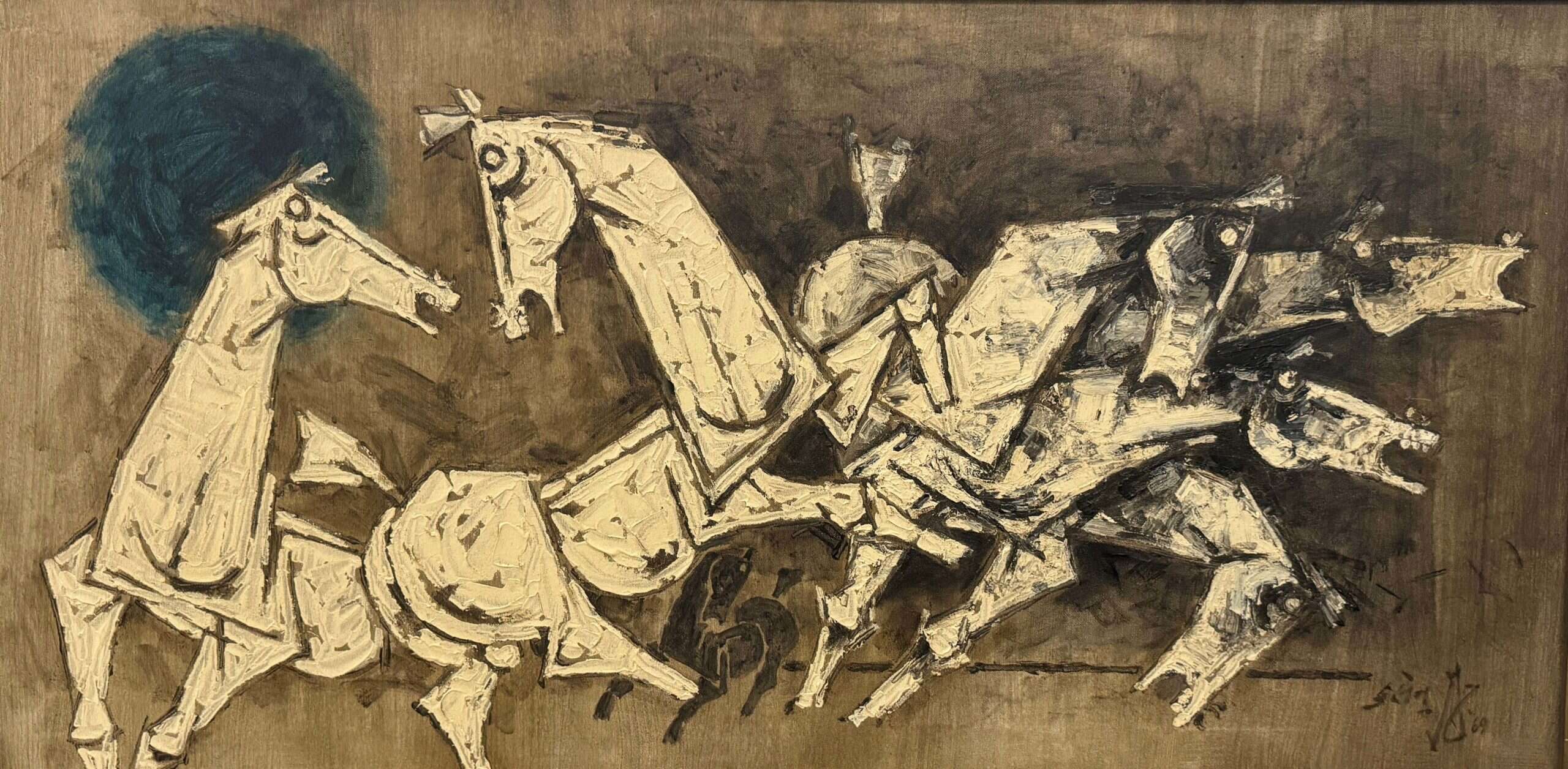
MF Husain Horses and Blue Sun 1969
Husain’s horses always charm, he said his horses like lightning, cut across many horizons. In his canvasses seldom were their hooves shown. They hopped around the spaces. Universal and personal emblems of power, horses were his earliest icon. Husain’s horses in this image of the Horse and Blue Sun are rampant and galloping, their strong heads, delicate feet and dilated nostrils expressed in blocks of ochre propelled by strokes of the brush or sweeps of the palette knife. Through the use of impasto and his choice of earthy tones in this work, Husain conveyed the sense of raw power of a herd of wild and untamed horses. According to E. Alkazi, horses are usually recognised as symbols of the sun and knowledge.
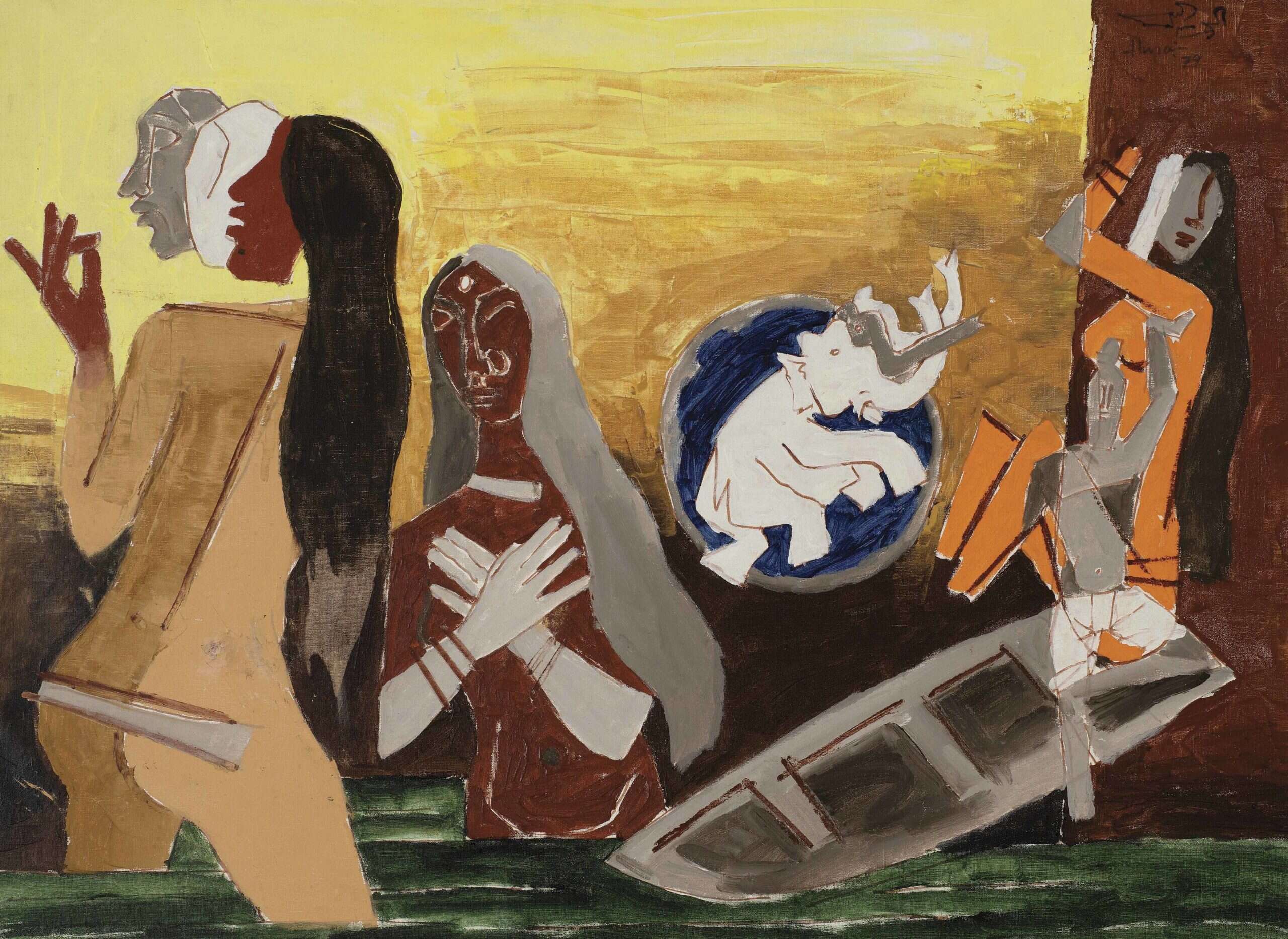
Husain’s Bathers 1979
Husain’s Bathers 1979 belongs to his Benares series.This work brings back memories of Husain’s visit to benares in 1961, when he and friend Ram Kumar visited Banaras together and were captivated by the city.Ram Kumar said: “ Every sight was like a new composition, a still life artistically organised to be interpreted in colours. It was not merely outward appearances which were fascinating, but they were vibrant with an inner life of their own, very deep and profound, which left an everlasting impression on my artistic sensibility.” This work is testimony to that time.
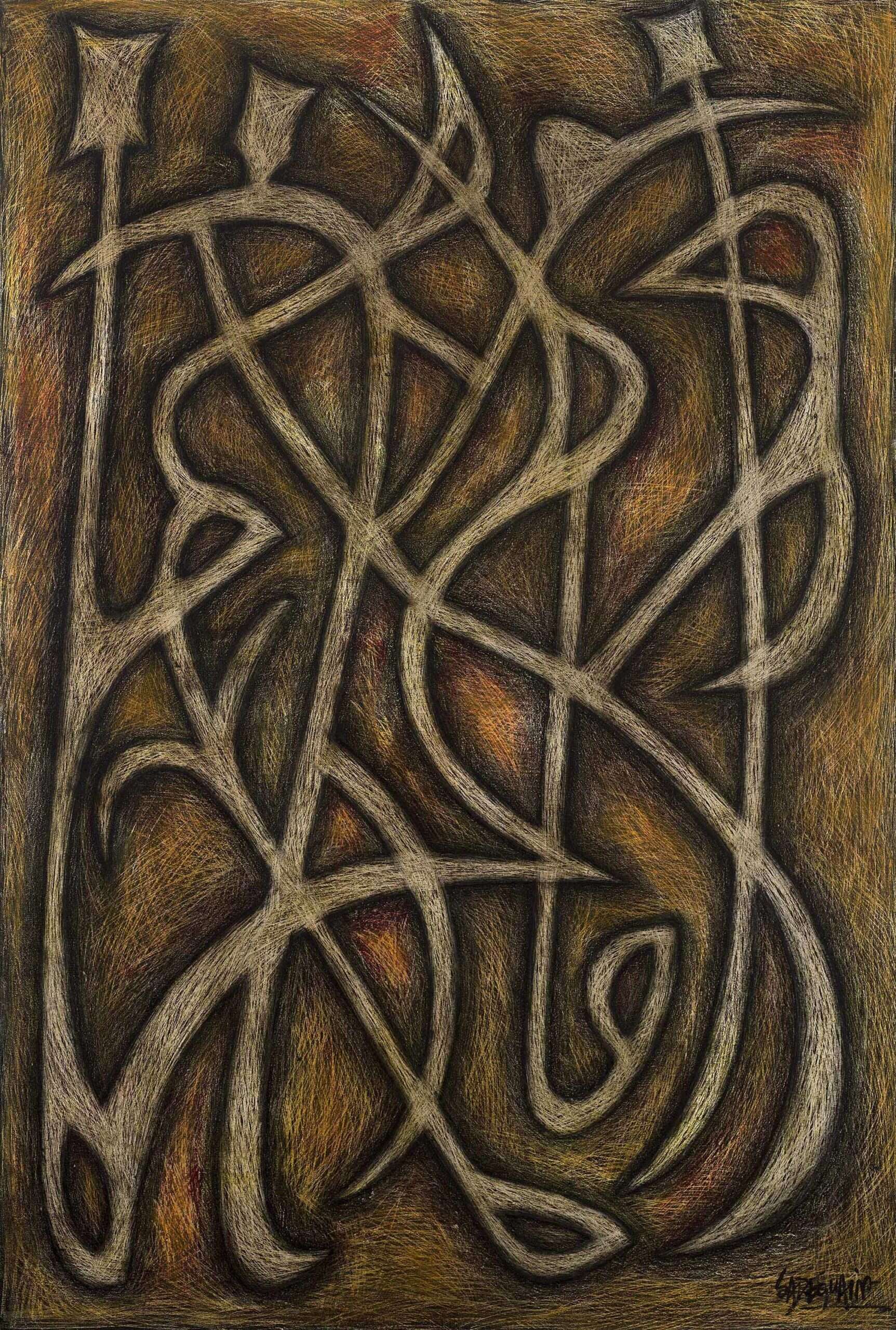
Sadequain’s Three Figures 1967
Painted at the end of Sayed Sadequain’s successful stint in Paris, this exemplar of calligraphic abstraction represents the very essence of the practice of Pakistan’s most celebrated modern painter.
One of Pakistan’s most celebrated artists, Sadequain’s diverse body of work spans the intimacy of calligraphy to the monumentality of the mural format to christen him as a calligraphic modernist.
The artist is considered the epitome of the Romantic bohemian, inspired by the verses of poet Iqbal and the syncretic histories of Hellenistic Greece, Rome and Pakistan. His interpretive paintings based on the poetry of Iqbal, remind us that poetic rhythms distill the essence of great art.All in all the exhibition serves to showcase the pioneering spirit of South Asian modernism.
IMAGES GROSVENOR GALLERY LONDON
Disclaimer
Views expressed above are the author’s own.
END OF ARTICLE

